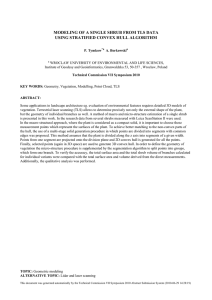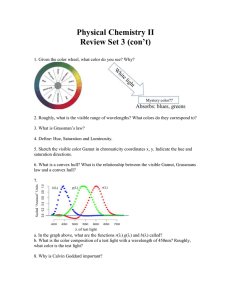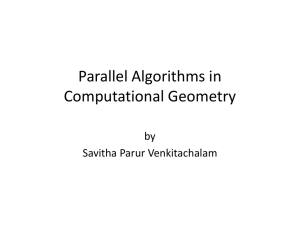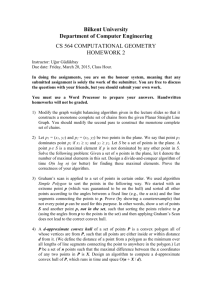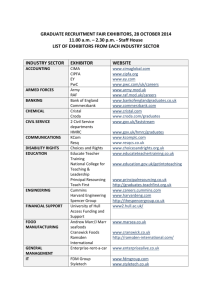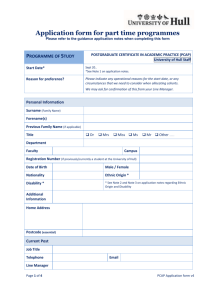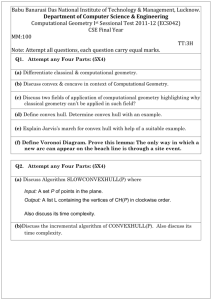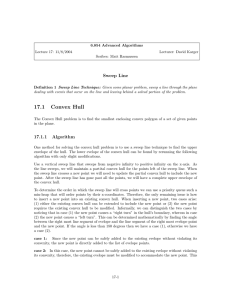computational algorithm
advertisement
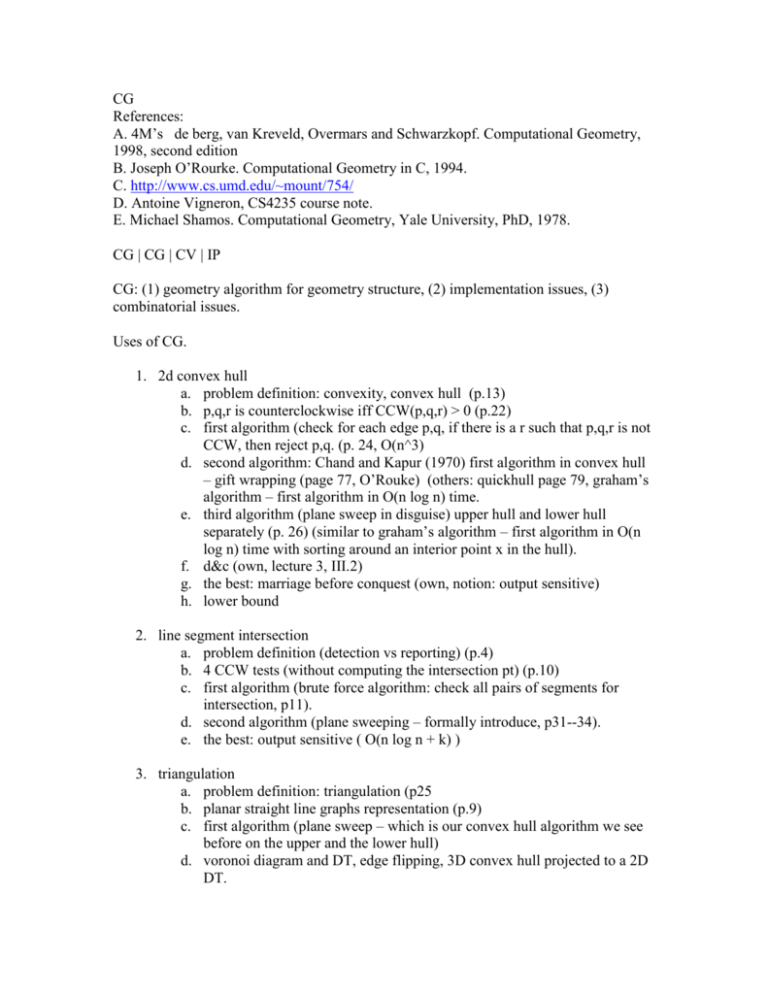
CG References: A. 4M’s de berg, van Kreveld, Overmars and Schwarzkopf. Computational Geometry, 1998, second edition B. Joseph O’Rourke. Computational Geometry in C, 1994. C. http://www.cs.umd.edu/~mount/754/ D. Antoine Vigneron, CS4235 course note. E. Michael Shamos. Computational Geometry, Yale University, PhD, 1978. CG | CG | CV | IP CG: (1) geometry algorithm for geometry structure, (2) implementation issues, (3) combinatorial issues. Uses of CG. 1. 2d convex hull a. problem definition: convexity, convex hull (p.13) b. p,q,r is counterclockwise iff CCW(p,q,r) > 0 (p.22) c. first algorithm (check for each edge p,q, if there is a r such that p,q,r is not CCW, then reject p,q. (p. 24, O(n^3) d. second algorithm: Chand and Kapur (1970) first algorithm in convex hull – gift wrapping (page 77, O’Rouke) (others: quickhull page 79, graham’s algorithm – first algorithm in O(n log n) time. e. third algorithm (plane sweep in disguise) upper hull and lower hull separately (p. 26) (similar to graham’s algorithm – first algorithm in O(n log n) time with sorting around an interior point x in the hull). f. d&c (own, lecture 3, III.2) g. the best: marriage before conquest (own, notion: output sensitive) h. lower bound 2. line segment intersection a. problem definition (detection vs reporting) (p.4) b. 4 CCW tests (without computing the intersection pt) (p.10) c. first algorithm (brute force algorithm: check all pairs of segments for intersection, p11). d. second algorithm (plane sweeping – formally introduce, p31--34). e. the best: output sensitive ( O(n log n + k) ) 3. triangulation a. problem definition: triangulation (p25 b. planar straight line graphs representation (p.9) c. first algorithm (plane sweep – which is our convex hull algorithm we see before on the upper and the lower hull) d. voronoi diagram and DT, edge flipping, 3D convex hull projected to a 2D DT. e. polygon triangulation f. the best: linear time polygon triangulation 4. other structures a. rng graph b. Gabriel graph etc. 5. Paradigms: a. D&c b. M-b-c c. Plane sweep d. Edge-flipping e. Duality f. Line arrangement g. randomization
